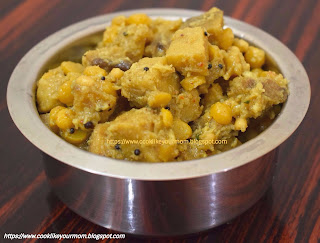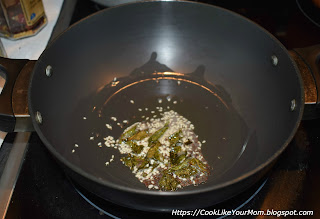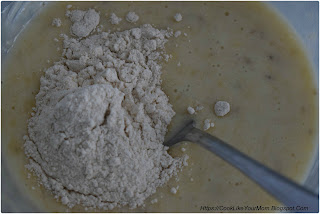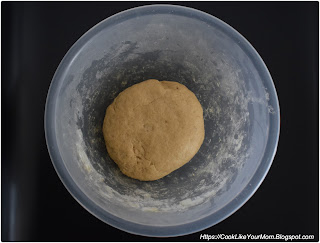This Yam dish is one of the items served in an "Onam Sadhya"(Traditional meal with at least 24 items).
This salt and sweet thick gravy goes well with any tangy main course (Sambar rice/Rasam rice/Tamari
Chopping "Yam" is strenuous because of its size. I have vivid memories of my mom using the traditional vegetable cutter (AruvaManai), to chop this huge vegetable.
The recipe below is just the way my mom makes. It can be personalized as per one's own wish.
The main ingredients are Yam and Split Chickpea (Chana Dal). However, the White pumpkin adds a chunky, juicy twist to the dish.
The quantity of the Chickpea, Coconut and White Pumpkin can be altered as per one's own choice.
Ingredients
Yam/Chenai : 350 Gms
White Pumpkin/Pooshanikkai : 250 Gms
Split Chickpea/Chana Dal : 1/4 Cup
Turmeric : 1/8 Tsp
Salt : As per taste
Chilli Powder : 1/4 Tsp (Depending on how hot your chilli powder is)
Grated Jaggery/Vellam : 1 Tsp
For Grinding
Grated Coconut : 1/4 cup
Cumin Seeds/Jeera : 1 Tsp
For seasoning
Mustard : 1/4 Tsp
Skinned Black Gram / Urad Dal : 1/4 Tsp
Curry Leaves : 2 sprigs
Grated coconut : Little less than 1/4 cup
Procedure
1) Soak the Chana dal for at-least 15 minutes.
2) Wash, peel and cut the yam and white pumpkin into chunky cubes of equal size.
3) Take a broad pan, add the cut vegetables along with chana dal, salt, turmeric powder and chilli powder. Add enough water and allow it to cook. Stir once in a while.
4) Once the ingredients are cooked, add jaggery to this melange. Allow it to blend well. At this stage, your curry should have just enough water to accommodate the ground coconut paste. Switch off the flame.
5) Grinding : Grind Jeera and coconut into a paste and add it to the curry.
7) Seasoning : Take a pan, add oil and temper the whole spices. Add the curry leaves, grated coconut and roast them well. Once roasted add it to the curry.
The curry is ready to be served.
Variation
- Instead of using a pan to cook the dal and veggies, you can pressure cook them for two or three whistles. Do not over cook them.
While pressure cooking, add the salt, turmeric and chilli powder too.
Tips
- Wash, peel and wash the Yam before chopping.
- Rubbing the peeled Yam with tamarind, salt and turmeric will negate the itchy sensation it may cause.
- The texture is very important. If it is over cooked, the dish will become mushy.
- Soaking the chana dal will help it cook better.
- Each ingredient has a different cooking time. Pumpkin gets cooked faster. Chana dal and the yam will get cooked late.
- While cooking in an open pan, stir once in while so that the veggies don't get burnt. Don't add a lot of water.
- After the veggies are cooked, if the dish is watery, then
a) It can be drained.
b) Or take a few pieces of yam and mash it so that the consistency becomes thick.
c) Or dilute a tsp of rice flour in less than 1/4 cup of water and add it to the curry and boil. This will help thicken the curry.
Cooking is an art. It is to be catered to one's own taste and imagination. When you know the hacks to save your dish, nothing can go wrong with your cooking.
Enjoy this amazing dish.




































